Saffron Milkcap
Uncommon in the South this tasty mushroom is more frequent in Scotland and Northern Britain.
| Mushroom Type | |
| Common Names | Saffron Milkcap (EN), Red Pine Mushroom, Cap Llaeth Saffrwm (CY), Mleczaj Rydz (PL), Ízletes Rizike (HU) |
| Scientific Name | Lactarius deliciosus |
| Season Start | Jul |
| Season End | Nov |
| Average Mushroom height (CM) | 7 |
| Average Cap width (CM) | 10 |
Cap
Convex with a depression in the centre when young becoming shallowly funnel-shaped. Salmon pink/orange with darker concentric rings. Green areas especially on aging or bruising.
Gills
Gills pale pink/saffron becoming carrot coloured and eventually bruising green. Gills running slightly down the stem and quite crowded.
Stem
Orange to salmon pink with darker spots or shallow depressions or pits. Can have green markings.
Flesh
Orange becoming white towards the centre of the stem. Exudes carrot coloured milk which will turn green after drying.
Possible Confusion
The False Saffron Milkcap (Lactarius deterrimus), pictured, which is edible but not quite as good as deliciosus.
The Lactarius semisanguifluus is similar but has more red than orange milk.
The Woolly Milkcap (Lactarius torminosus), but this has ‘woolly’ edges to the cap that extend in towards the stem and has off white milk not Carrot coloured.
Spore Print
Pale ochre to pale salmon coloured. Ellipsoid with ridges. You should scrape your spores into a small pile to get an accurate spore colour.
Taste / Smell
Good with a crisp texture. Will turn your meal orange.
Frequency
Uncommon in the South becoming more prevalent the further North you look.


 (41 votes, average: 4.15 out of 5)
(41 votes, average: 4.15 out of 5)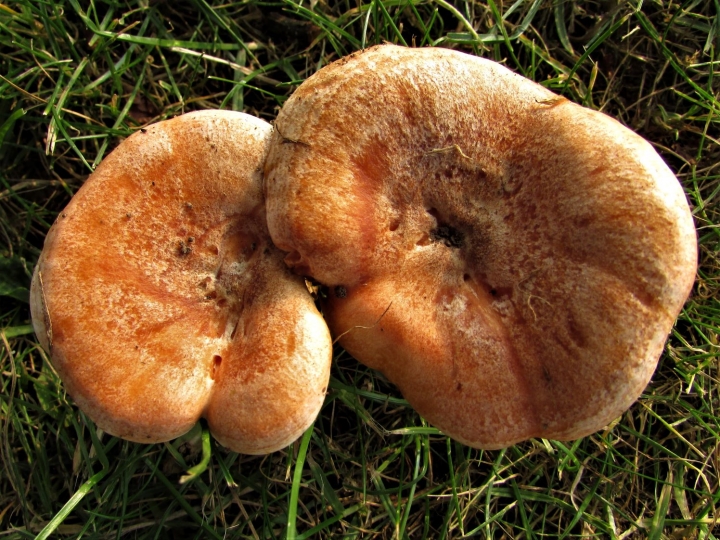
















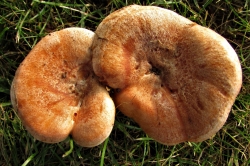
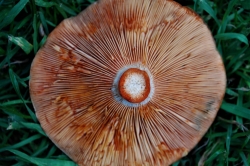
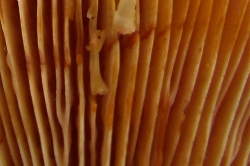
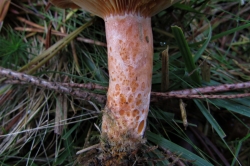
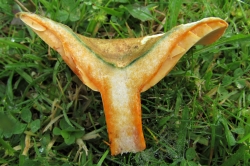
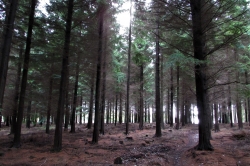
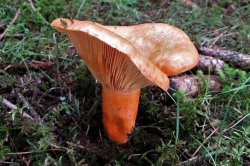
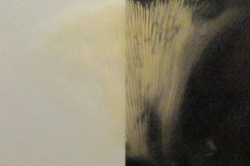



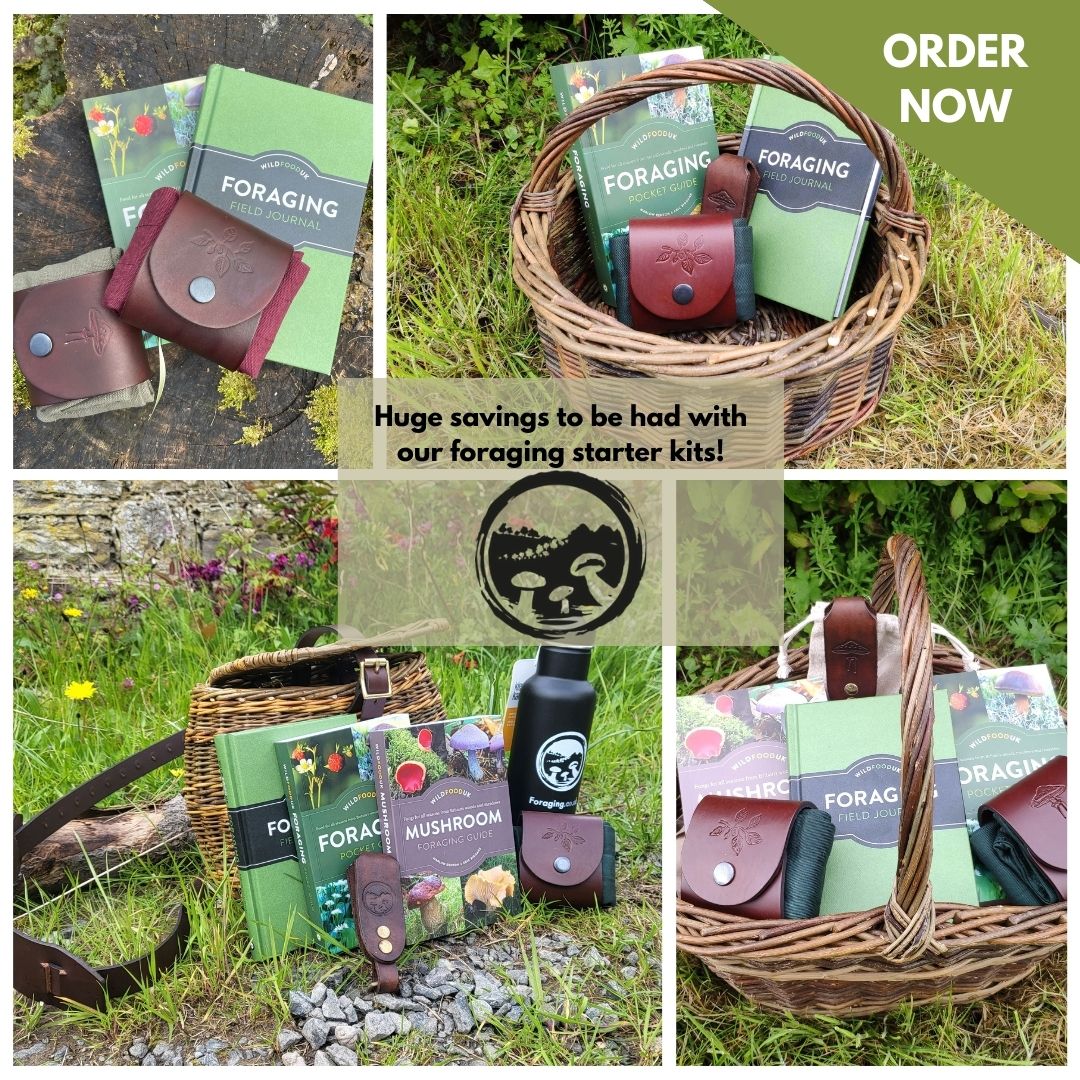

15 comments for Saffron Milkcap
found some in bracknell (stem almost hollow from maggots) berkshire far south of scotland 🙂
A hollow stem is synonymous with the false Saffron milk cap,still edible but not as tasty.
Hi guys,2 years ago i found some close to Yeovil, does anyone know if someone find it around Tiverton please??
Best Regards
Noti
We have found some in Church Crookham today (near Aldershot, Hampshire).
Yes I found some near the woods around the Motorcycle Training Centre Aldershot too.
I’ve been finding loads over the past few days in the same area as you guys. Always under pine.
I found 2 of these yesterday in Kent in my garden under my pine tree, both large but one the size of a dinner plate.
Kilos and kilos around Inverness
Found a load all around a pine tree in South Wales. Approx 2.5 away from center of tree in a complete circle. Young and old. 3pm 19th October.
I found an abundance of these beauties yesterday while I was out foraging. Pine plantation behind sand dunes. East coast of Scotland. Deliciosus!!
found in Box Hill Surrey.
Hi Marlow and team, pretty certain I found a bunch of these yesterday but an older specimen seemed more like a False version. This mornings more mature ones from the patch appear to have the pitted stem, whereas yesterdays one was smooth orange. Do they grow together?
Also I found lots of Shaggy Parasols lately but oddly the day after I watched you mention the Amanita Pantherina, the following morning on way to the corner shop, I thought I had found one. Turned out to be the far safer Blusher. I keep missing them in their prime though, as nature just demolishes them.
Can I post you a picture of two oddities please? I keep finding Ruby Boletes (which I gather are soapy and disgusting) but the other day I found a sadly rather dried out specimen of a different polypore of some kind, that had literally drilled its way out of a concrete wall! It cannot be the Pavement Mushroom, which is gilled, skirted etc and I have no idea as yet, what it might have been in it’s former glory.
Plus with the Saffron Milkcaps or False ones, I found a shroom with a U-SHAPED DUAL STEM, which Fuses into ONE CAP of a Maroon colour. Yellow gilled and no skirt, or any kind of base, just a U of its own stipes into a free gill yellow.
Hi Pandora, False Saffron and Saffron Milkcaps can grow together. The pits on the stem don’t always mean the true Saffron. The best way is to test the milk, both start orange and eventually turn to green but the False Saffron Milkcaps milk will turn wine red after about half an hour before eventually becoming green. I’m happy with the taste of both.
You can send photos to [email protected] Please send photos of the cap, the underneath, the stem and where it was growing. If there are any smells coming from the mushroom, this can also help with ID.
Ruby Boletes are a bit soapy but still edible, it’s because they are uncommon that it’s best to leave them be unless you find a huge haul.
Thanks for the detailed reply Eric, the Saffs were defo the real deal and lived way beyond their latin DELICIOSUS name. In fact, in my case, I found them almost entheogenic, psychotropic, in ways I cannot explain here. Something I was not expecting, which probably does not occur for most people. Regardless, they are the tastiest thing I have EVER EATEN!
I will send pics of the others I mentioned, plus if I may, some of another, that I had a great find of, I think, that I was led to by a Rainbow, the other day.
Found lots today in Thetford forest, they are super tasty, luckily barely anyone knows they are edible!